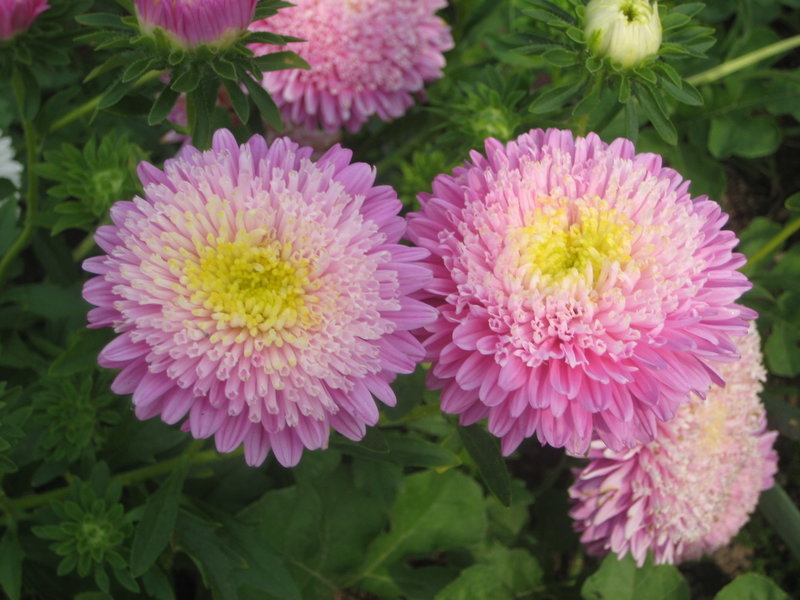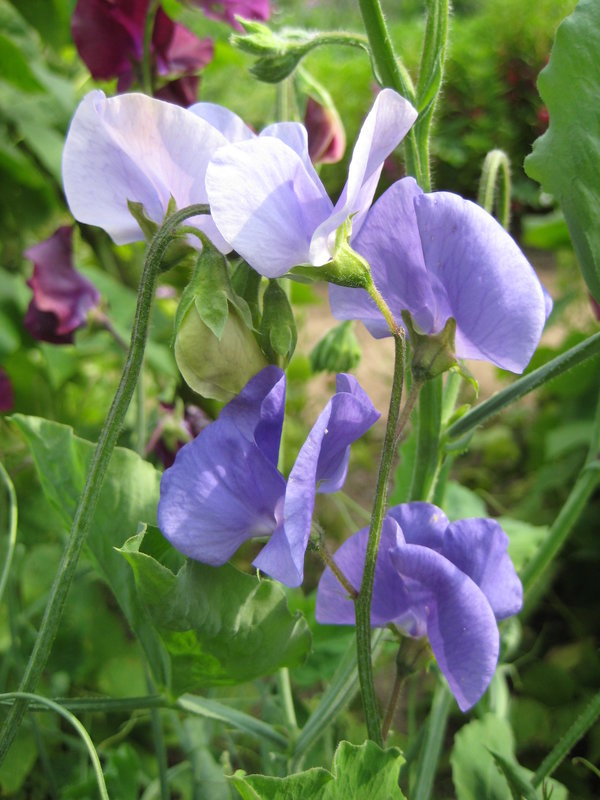Favourite Annual Flowers of a Hundred Years Ago

Bob Wildfong
This is an excerpt from an article in Seeds of Diversity member magazine, Spring 2018
To a gardener in 1918, flowers were immensely important; probably even more than they are today. In our modern era we are surrounded by colours: lights, clothing, and brightly coloured plastics. In an earlier time when most of the world was brown, different hues of green, and blue or gray above, the colours of garden flowers must have been a spectacular delight for the eyes.
Flowers also offered a small relief from the stresses of life. 1918 was a year of incredible tumult in Canada. Four long years of the most brutal war that humanity had yet endured, the loss of thousands of young men and women, and many thousands more injured and traumatised, had left the country drained of the optimism that had marked the first decade of the new century. Canadians yearned for tranquility and beauty, and were nostalgic for a simpler time. Then, as always, people turned to the garden for peace and pastoral comfort.
Annual flowers were especially interesting for Canadians at the turn of the last century, because many species were still novel. Since most of the flowers that we call annuals (only living for one summer) are from the tropics (where they live for many years because they do not freeze), many of them had only recently been discovered and brought into horticultural cultivation. Although in 2018 we are so thoroughly familiar with petunias as to be nearly bored by them, in 1918 good bedding petunias were still a fairly new introduction.
A quick scan of historic seed catalogues from 1910-1918 reveals a lot. Seed companies offered very nearly the same range of flower species that they do now. Everything from Achillea to Zinnia was available to gardeners by convenient mail order. The difference though, was in the range of varieties! Whereas a typical modern seed catalogue might list three or four varieties of most flower types, old seed catalogues often list dozens.

Also, it is unusual today to see flower seeds available in a palette of separate colours. Instead, most modern seed packets offer mixes of colours. A century ago gardeners could easily find named varieties of many annual flowers, in an astonishing assortment of separate colours. We can imagine how they could create designs made of different colours of stocks, or of portulaca, or of zinnias, all purchased as seeds and carefully arranged. In fact, we have to imagine it because the photographs are black and white, but it is clear that this was a common practice.
We can see from seed catalogues, garden magazines of the period, and grainy photographs that some annuals were more fashionable than others a hundred years ago. If petunias, geraniums, and impatiens are the common annuals of today, the favourites of our gardening forebears were undoubtedly asters, sweet peas, and nasturtiums. Among the many annual flowers listed in seed catalogues of 1910-1918, whole pages are given to those three along with expensive illustrations and photographs, testimonials from famous gardeners, and literally hundreds of named varieties.

What happened to all these wonderful flower varieties? It would be easy to imagine that we live in an era of increasingly greater floral diversity, since there have been so many new varietal introductions every year for so many decades. Unfortunately, new varieties have forced older varieties to be displaced, and as most flower seed companies have consolidated to become international corporate entities, there are fewer producers of flower seeds now than ever before. Sadly, we have less genetic diversity in our annual flowers than we did a hundred years ago, and the vast majority of heritage flowers from 1918 are apparently gone forever.
But you can still enjoy the varieties that remain. Grow some asters from seed, and see how beautiful they are. Sow some sweet peas in early spring, in cool soil, and enjoy the sweet scent that made them irresistible a century ago. Plant nasturtiums among your vegetables, and use them as ornamental salad ingredients, or edible flower arrangements, either way. These old favourite annuals could become your favourites too!
--
Bob Wildfong is Seeds of Diversity’s executive director. He grows sweet peas beside his regular peas, and knows which are edible, and he grows nasturtiums as a colourful vegetable.
Photos: Powderpuff asters, Spencer sweet peas, Dwarf Jewel nasturtiums, by Bob Wildfong.
Thanks to the Royal Botanical Gardens, Hamilton Ontario, for the use of historic seed catalogues from its Centre for Canadian Historic Horticultural Studies.
Not yet a member?
An annual membership to Seeds of Diversity gives you access to our seed exchange, seed grow-out programs, and our online news.

We depend on donations to do our work.

Thank you for your support!
